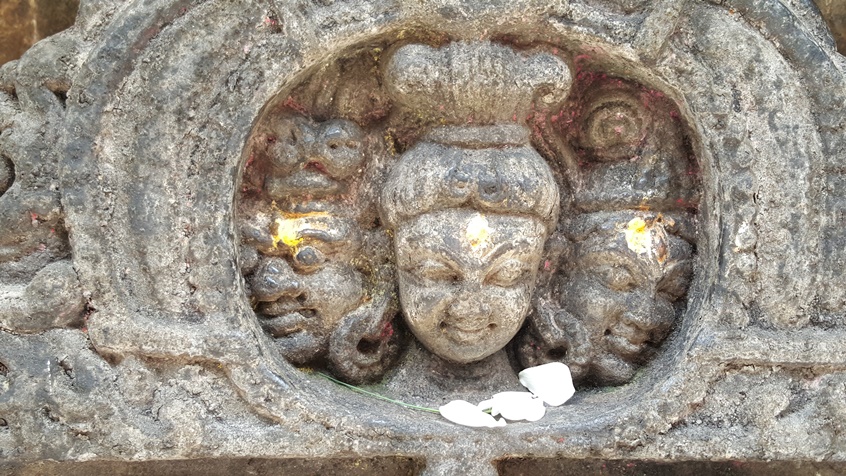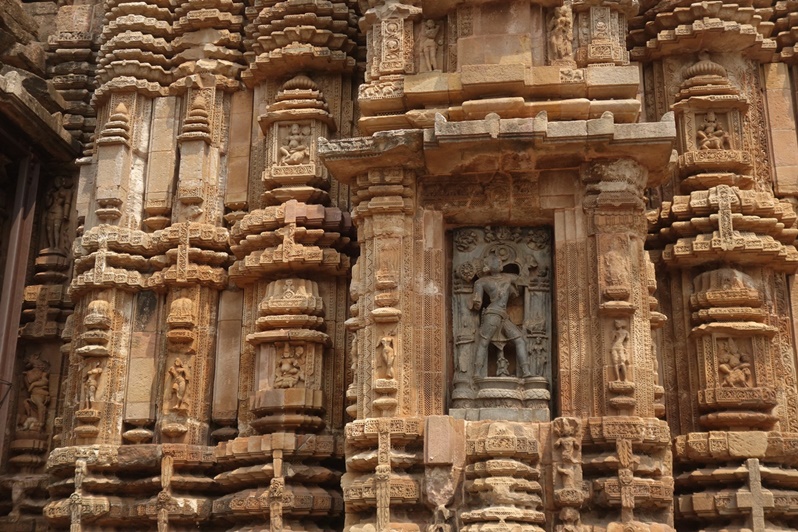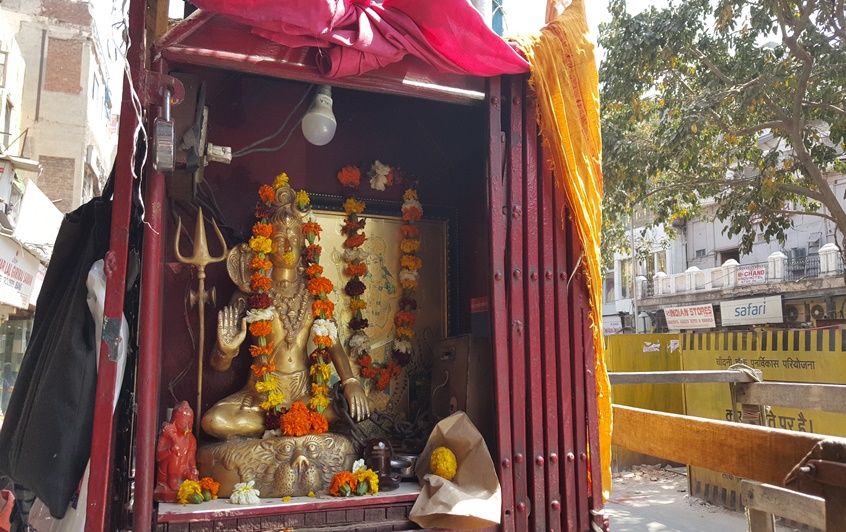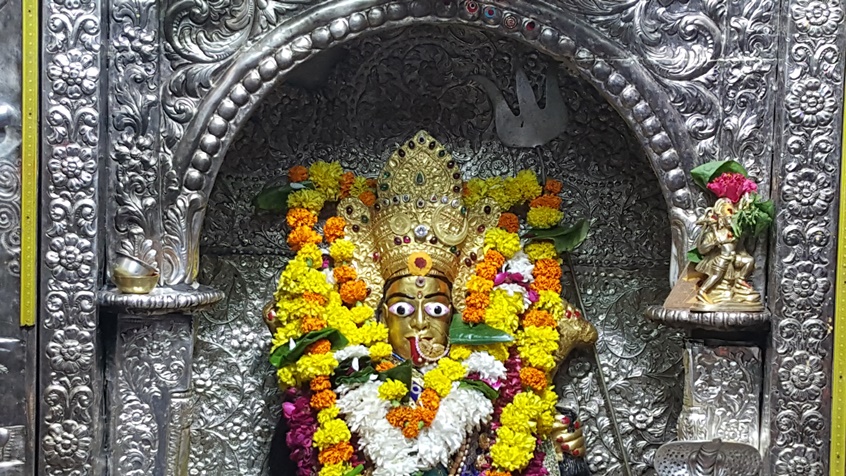
par Bertrand Bellaize, le 17 août 2020
Hindouisme - divinité hindoue : la Trimurti - Saraswati
La Trimurti est le socle de l’enseignement spirituel hindou qui permet d’expliciter le monde manifesté dans laquelle nous évoluons : Brahma représente le principe créateur, Vishnou, le préservateur et Shiva le destructeur qui permet le renouvellement.
Cependant le principe actif, soit la Shakti , l’énergie créatrice, est manifesté par le coté féminin de la divinité hindoue : pour Brahma, il s’agit de Saraswati : elle est à la fois sa fille et son épouse.
La plupart du temps, sa naissance est enseignée comme provenant de la scissiparité d’un œuf de Brahma qui est un mode de reproduction asexuée (division de l’organisme).
Mais Saraswati peut aussi naître de la bouche de Brahma.
Ainsi suivant les textes et l’évolution de l’hindouisme, son origine et ses fonctions varient.
Aux temps Védiques, elle fût la déesse personnifiée de la rivière Saraswati (aujourd’hui disparue), vénérée telle le Gange de nos jours et symbole de la fertilité : elle devint ainsi l’épouse de Vishnou qui l’offrit à Brahma. Dans le Rig Veda, son nom signifie « celle qui coule des montagnes jusqu’à l’océan ». Saras signifiant « coule », elle symbolise la fluidité sous toutes ses formes.
Il est intéressant de noter, à nouveau, que l’hindouisme tente par tous les moyens de nous transmettre le concept de changement perpétuel qui anime la manifestation.
Ainsi si Brahma et sa Shakti représentent la création, ils incarnent aussi le mouvement : rien n’est figé, la manifestation est l’expression de l’énergie qui circule constamment. La Trimurti représente les trois formes primordiales mais Brahma, Vishnou et Shiva porte en eux même (comme tout un chacun) la totalité du cycle de la vie : mort/naissance.
Saraswati, déesse de la parole
Sous ce nom, Saraswati est aussi nommée Vac, la déesse de la parole : du verbe naît toutes choses. Saraswati est donc à l’origine de toutes les formes, c’est la mère bien aimée. Au même titre que Brahma, elle est honorée comme la génitrice, celle par qui tout est crée, tout advient.
Ainsi on la nomme « Vâgdevi » déesse de la parole, Vâgeshvari, la maîtresse de la parole ou bien Savitri, l’incitatrice, Bhâratî, l’éloquence, Jaganmâtâ, la mère du monde.
Saraswati, déesse de la Connaissance
A cette parole originelle est associée la Connaissance . C’est elle qui transmet les Védas aux hommes (à cette occasion dénommée Vedamâta, la mère des Veda).
Elle représente donc la sagesse, l’intelligence. Elle éclaire, elle est la lumière qui éloigne les ténèbres qui se matérialisent par l’ignorance. Elle incarne l’Absolu tout autant que Brahma. On la nomme alors Mahâ Vidya, la Connaissance transcendante.
De plus, pas d’aspect courroucé chez elle, c’est la tempérance qui domine et en cela elle figure l’aspect paisible de l’existence, la pondération : une forme d’équilibre, le pendant de l’énergie créatrice, bouillonnante et impulsive.
Dans l’hindouisme, elle est celle qui enseigna le sanscrit (la langue sacrée) aux Hommes ainsi que l’écriture.
Saraswati, déesse des arts et de la création
De son rôle dans la génèse du monde a découlé sa place de mère des arts : les poètes, écrivains, musiciens… l’honorent et la vénèrent.
Elle incarne l’harmonie, la tempérance, une forme de douceur et de paix. Elle évoque le raffinement.
Crédit Photo : Shankargallery
La forme de Saraswati
Sous l’image d’une très belle femme, Saraswati est souvent représentée debout (ou assise), habillée sobrement et portant peu de bijoux, son visage, empreint de douceur et de sérénité.
Ses attributs sont le lotus, Padma, qui symbolise la pureté, la beauté, la perfection. Il est le sein maternel, la matrice d'où viennent toutes choses. C'est le siège du principe féminin, la Shakti.
Le lotus donne une fleur de toute beauté, alors qu'il provient d'un environnement marécageux, obscur voire repoussant : il représente donc la possibilité de transformation, d'élévation.
Elle joue du Luth, Vina qui procure l’harmonie.
Crédit Photo Shankargallery
Elle a de deux à huit bras et porte parfois un arc, une massue, un trident, armes symbolisant la suprématie de la connaissance sur l’ignorance. Ou bien la conque, la cloche, emblèmes de sa fonction dans la création du monde primordial.
Parfois un soc de charrue rappelant sa qualité de fécondité ou un rosaire figurant la vigilance, qualité nécessaire du chercheur spirituel, apparaissent à ses cotés ainsi que le crochet pour diriger les éléphants.
Sa couleur est le blanc, symbole de la paix. Couleur également du cygne qui est sa monture (le cygne indique la connaissance et le discernement, la faculté à séparer le bon du mauvais. Les légendes indiquent que le cygne est capable de séparer le lait de l’eau ! De part sa forme, il évoque la grâce, la beauté). Parfois elle est accompagnée du paon : oiseau majestueux au plumage magnifique qui se pavane : il représente l’apparence, la superficialité, la vanité en somme l’ignorance grossière. Saraswati en le chevauchant incarne la connaissance, la maîtrise des pulsions primordiales.
Le culte de Saraswati
Bien entendu, tous les corps de métiers liés à l’apprentissage, au savoir vénèrent tout particulièrement Saraswati : professeurs, étudiants… mais son culte va bien au-delà car elle symbolise la Connaissance, dans le sens le plus spirituel, soit l’Absolu.
Dans la transmission de l’enseignement spirituel, au quotidien, de nombreuses pujas (rituels) sont célébrées en faveur de Saraswati : le blanc domine alors dans les offrandes des fidèles : lait, noix de coco, gâteaux de farine blanche, fleurs…
Cependant lors de la fête qui lui est dédiée, Vasanta Panchami, qui marque l’arrivée du printemps (en fait célébrée 40 jours avant, soit le cinquième jour de la lune montante du mois de Magha (février) : période de transition entre deux saisons) en rappel à ses attributs de créativité, de fertilité, de fécondité, la couleur dominante est le jaune qui rappelle la fleur de moutarde, annonciatrice du renouveau. Saris, accessoires, sucreries guirlandes de fleurs… tout est marqué de jaune. Les livres, cahiers, stylos, instruments de musique sont évidemment particulièrement honorés et placés sur l’autel devant Saraswati. Les écoles participent de façon active et les jeunes enfants apprennent ce jour là leur premiers mots.
Crédit Photo Drakoheart
Sources
Sarah Combe - Un et Multiple – Editions Dervy
Alain Daniélou : Mythes et Dieux de l’Inde


